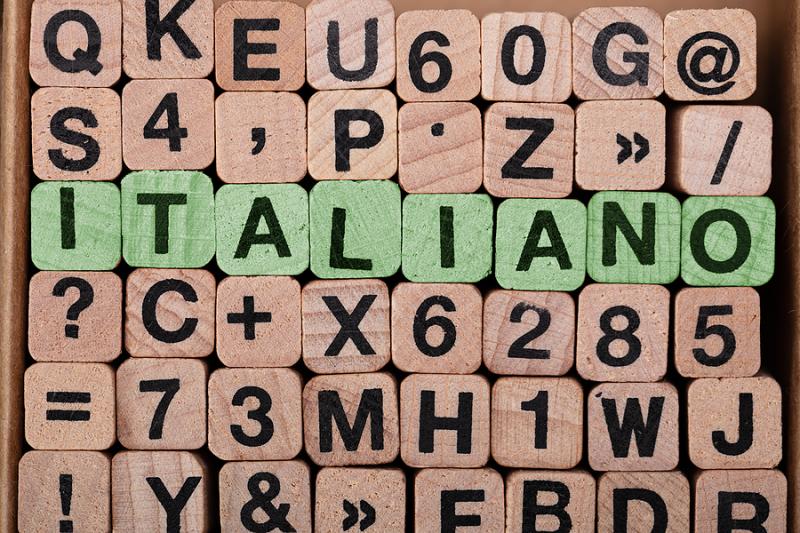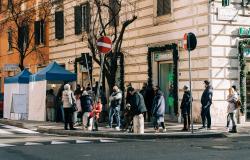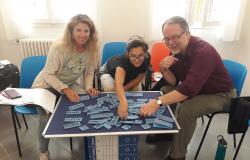Italian is considered one of the most beautiful and melodic languages in the world—the language of music—but how difficult it is to pronounce sometimes! This is especially the case if your first language is English and you are not used to reading all the letters in a word and pronouncing all the vowels when you speak.
In this article, we’d like to focus on some particular sounds in the Italian language and their correct pronunciation to help you to sound more Italian in conversation. How many times have you stumbled upon a fancy Italian word in a menu of a restaurant that you could not pronounce properly? And while zucchine [zuk-ki-ne] (not zucchini) is more or less clear, dealing with gnocchi can be a real struggle. Carciofi alla romana, crema di ceci, cannoli siciliani…the list goes on. Next time, don’t limit yourself to a simple pizza because you’re afraid of seeing “amused” Italians around you!
As you might have guessed, today we start with the letter “c” and its pronunciation in various contexts.
“C” is the third letter of the Italian alphabet and its pronunciation doesn’t follow the same rules as the English “c”. In Italian, the pronunciation of “c” always depends on the vowel or consonant following it.
How to Pronounce C Followed by A, O, or U in Italian
If “c” is followed by the letters a, o, or u— “cat, cold, cut” is a good way to remember it—it’s a so-called “hard c” pronounced like a “k”.
The rule is: c + a/o/u = ka, ko, ku
These are some examples:
- Calabria [ka-la-bree-ah] – a region in the south of Italy
- coltello [kol-tel-oh] – knife
- cupola [koo-po-lah] (stress on the first syllable) – dome
- cantare [kan-ta-reh] – to sing
- copiare [ko-pee-a-reh] – to copy
- curioso [ku-ree-o-zoh] – curious
How to Pronounce C Followed by I or E in Italian
On the other hand, if “c” is followed by the letters i or e, it becomes “soft” and is pronounced like a “ch”, as in cheat.
The rule is: c + i/e = tʃi/tʃe
These are some examples:
- città [chee-tah] (stress on the second syllable) - city
- cena [che-nah] – dinner
- Cenacolo [che-na-ko-loh] – “The Last Supper” by Leonardo Da Vinci
- Ci vediamo! [chee ve-deea-moh] – see you!
How to Pronounce CH in Italian
When you meet a combination of “c” and “h”, keep in mind that the letter h makes the c sound “hard” again.
The rule is: c + h = k
Remember:
- chiaro [kee-ar - oh] – clear
- Perché? [per–keh]* (stress on the second syllable) – why?
- schermo [sker-moh]*– screen
- chiesa [kee-eh-zah] - church
*(pronounce “e” as in “scare”)
How to Pronounce C Followed by a Consonant in Italian
Finally, when “c” is followed by another consonant, it is always pronounced like the letter k.
The rule is: c + l/r = k
Remember:
- credo [kre-doh]* – I believe
- crudo [kroo-doh] – raw
- classe [kla-seh] – class
- cliente [klee-en-teh] – client
*(pronounce “e” as in “scare”)
Let’s try to say:
- Civitavecchia [Chee-vee-tah-vek-ee-a] – a city in central Italy, Lazio.
- cucinare [ku-chee-na-reh] – to cook
- cieco [cheh-koh] – blind
- successo [su-che-soh] – success
Now try to read this small dialogue, useful when you introduce yourself to someone. While reading, pay attention to the rules we have spoken about above.
- Ciao! Come ti chiami? (Hello! What’s your name?)
- Mi chiamo Marco. (My name is Marco.)
- Piacere. Sono Chiara. (Nice to meet you. I’m Chiara.)
- Cosa fai qui? (What are you doing here?)
- Sono qui per un concerto. (I’m here for a concert.)
- Che bello! (Oh, that’s great!)
Up to now it’s been an easy ride with the basic rules. Let’s go into depth by adding some additional information.
How to Pronounce C Preceded by S in Italian
Above, we learned how to deal with “c” when it’s followed by other consonants and vowels, but the pronunciation of this tricky letter also depends on the letter that comes before it, in particular the letter s.
C+i and c+e (which normally sound like [chi] and [che]) with an “s” placed before them sound like [shee] and [she], like in she or shake.
The rule is: S + ci/ce = shee/she
For example:
- sciare [shee-a-reh]* – to ski *(pronounce “a” as in “you are”)
- scimmia [shee-mee-ah] - monkey
- scenografia [she-no-gra-fee-ah] - setting
- scenario [she-na-ree-oh] - scenery
- cuscino [ku-shi-noh] - pillow
- uscire [oo-shee-reh] – to go out, to exit
- sciabola [shee-a-bo-lah] – saber
Combinations like “schi” or “sche” can be misleading, but in such cases you should apply the same rules for “chi” and “che”, in which the letter c is hard because it is followed by the letter h.
The rule is: S + chi/che = skee/ske
For example:
- schema [ske-mah]* – scheme
- schizzare [skee-tza-reh]– to splash
- scherzare [sker-tza-reh]* – to joke
- schiuma [skee-u-mah] - foam
*pronounce “e” like in “schedule”
As you can see, the rules are quite easy to remember since there are only two cases when the “c” is soft.
Now, at last but not least, let’s see if you can pronounce those dreaded menu items mentioned in the beginning:
- Carciofi alla romana [kar-chio-fi a la ro-ma-na] – Roman-style artichokes
- Crema di ceci [kre-ma di che-chi] – creamy chickpea soup
- Cannolo siciliano [ka-no-lo si-chi-lee-a-no] – Sicilian pastry with ricotta cheese.
- Gnocchi [njo-kee] – a type of pasta, usually made of potatoes.
- Scialatielli [sha-la-te-lee] – another type of pasta, a typical dish of the Amalfi coast.
Learning how to pronounce the letter c is a huge step in conquering Italian phonetics, and once you start to practice more, you will not have to think about the rules every time you speak. It will come to you naturally!
The key is regularity. Listen to more songs in Italian or watch some videos on YouTube to get used to the sound of the language. And as soon as you get an opportunity to practice, just dive in!
Don’t be afraid of making mistakes, ask for help—Italians will gladly explain to you the difference between “scarpa” and “sciarpa”.
Next time we will learn how to pronounce the “g”. Spoiler: the rules are quite similar!
(Note: This article was originally written for Italy Magazine by Pat Eggleton on March 30th, 2010. It has been updated and expanded.)




















